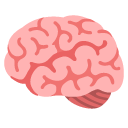 Artificial intelligence is perhaps the most transformative technological advancement of our time, poised to revolutionize industries, reshape societies, and redefine the very fabric of human existence.
Artificial intelligence is perhaps the most transformative technological advancement of our time, poised to revolutionize industries, reshape societies, and redefine the very fabric of human existence.
It is fundamentally changing the way we work, communicate, and interact with the world around us, pushing the boundaries of what we thought possible and opening up new frontiers in fields ranging from healthcare and finance to transportation and entertainment. With its ability to analyze vast amounts of data, learn from experience, and make autonomous decisions, artificial intelligence is poised to drive profound societal shifts and shape the future in ways we are only beginning to imagine.
Therefore, it is important to understand how LLMs (Large Language Models) work, as they are at the forefront of AI development and are increasingly integrated into various aspects of our lives. By comprehending their underlying mechanisms, capabilities, and limitations, we can harness their potential more effectively, mitigate potential risks, and ensure that the benefits they bring are maximized while addressing any ethical, social, or technical challenges that may arise. Moreover, understanding LLMs empowers us to actively participate in shaping their development, usage, and impact, fostering a more informed and responsible approach to AI adoption in society.
Drawing upon a diverse array of sources and perspectives, the following video explores the multifaceted implications of AI across various sectors, from healthcare and finance to transportation and entertainment. Through a lens sharpened by fascinating examples, it presents a nuanced understanding of the opportunities and challenges that accompany the rise of AI.
And one more thing before we get to the video. All the text above this paragraph was written by ChatGPT 3.5 (the free version) with a few prompts by me.
I know that a 2-hour video is not everyone’s cup of tea. But it’s fun, instructive and thought provoking. Below the video, there’s a helpful guide to it with timestamps for quick navigation. Someone got it done using — what else? — an AI engine (HARPA AI) and posted it as a comment to the video.
 Just one more thing (he said, as he invoked his inner Columbo). The guy in the video with the slight lisp and the funny French accent reminds me of Inspector Clouseau.
Just one more thing (he said, as he invoked his inner Columbo). The guy in the video with the slight lisp and the funny French accent reminds me of Inspector Clouseau.
BEGIN QUOTE:
 Key Takeaways for quick navigation:
Key Takeaways for quick navigation: Introduction to AI and Large Language Models – Exploring the landscape of artificial intelligence (AI) and large language models. – AI’s promise of profound benefits and the potential questions it raises. – Large language models’ versatility and capabilities in generating text, answering questions, and creating music.
Introduction to AI and Large Language Models – Exploring the landscape of artificial intelligence (AI) and large language models. – AI’s promise of profound benefits and the potential questions it raises. – Large language models’ versatility and capabilities in generating text, answering questions, and creating music. Revolution in AI and Deep Learning – Overview of the revolutionary changes in AI technology over the past few years. – Surprising results in training artificial neural networks on large datasets. – The resurgence of interest in deep learning techniques due to more powerful machines and larger datasets.
Revolution in AI and Deep Learning – Overview of the revolutionary changes in AI technology over the past few years. – Surprising results in training artificial neural networks on large datasets. – The resurgence of interest in deep learning techniques due to more powerful machines and larger datasets. Limitations of Current AI Systems – Acknowledging the impressive advances in technology but highlighting the limitations of current AI systems. – Emphasizing that language manipulation doesn’t equate to true intelligence. – The narrow specialization of AI systems and the lack of understanding of the physical world.
Limitations of Current AI Systems – Acknowledging the impressive advances in technology but highlighting the limitations of current AI systems. – Emphasizing that language manipulation doesn’t equate to true intelligence. – The narrow specialization of AI systems and the lack of understanding of the physical world. Modeling AI on Animal Intelligence and Common Sense – Proposing a vision for AI development starting with modeling after animals like cats. – Recognizing the importance of common sense and background knowledge in AI systems. – The need for AI to observe and interact with the world, similar to how babies learn about their environment.
Modeling AI on Animal Intelligence and Common Sense – Proposing a vision for AI development starting with modeling after animals like cats. – Recognizing the importance of common sense and background knowledge in AI systems. – The need for AI to observe and interact with the world, similar to how babies learn about their environment. Building Blocks of Intelligent AI Systems – Introducing key characteristics necessary for complete AI systems. – Highlighting the role of a configurator as a director for organizing system actions. – Addressing the importance of planning and perception modules in developing advanced AI capabilities.
Building Blocks of Intelligent AI Systems – Introducing key characteristics necessary for complete AI systems. – Highlighting the role of a configurator as a director for organizing system actions. – Addressing the importance of planning and perception modules in developing advanced AI capabilities. World Model in Intelligence – Intelligence involves visual and auditory perception, followed by the ability to predict the consequences of actions. – The world model is crucial for predicting outcomes of actions, located in the front of the brain in humans. – Emotions, such as fear, arise from predictions about negative outcomes, highlighting the role of emotions in decision-making.
World Model in Intelligence – Intelligence involves visual and auditory perception, followed by the ability to predict the consequences of actions. – The world model is crucial for predicting outcomes of actions, located in the front of the brain in humans. – Emotions, such as fear, arise from predictions about negative outcomes, highlighting the role of emotions in decision-making. Machine Learning Principles in World Model – The challenge is to make machines learn the world model through observation. – Self-supervised learning techniques, like those in large language models, are used to train systems to predict missing elements. – Auto-regressive language models provide a probability distribution over possible words, but they lack true planning abilities.
Machine Learning Principles in World Model – The challenge is to make machines learn the world model through observation. – Self-supervised learning techniques, like those in large language models, are used to train systems to predict missing elements. – Auto-regressive language models provide a probability distribution over possible words, but they lack true planning abilities. Future Vision: Objective Driven AI – The future vision involves developing techniques for machines to learn how to represent the world by watching videos. – Proposed architecture “Jepa” aims to predict abstract representations of video frames, enabling planning and understanding of the world. – Prediction: Within five years, auto-regressive language models will be replaced by objective-driven AI with world models.
Future Vision: Objective Driven AI – The future vision involves developing techniques for machines to learn how to represent the world by watching videos. – Proposed architecture “Jepa” aims to predict abstract representations of video frames, enabling planning and understanding of the world. – Prediction: Within five years, auto-regressive language models will be replaced by objective-driven AI with world models. Defining Intelligence and GPT-4 Impression – Intelligence involves reasoning, planning, learning, and being general across domains. – Assessment of ChatGPT (GPT-4) indicates it can reason effectively but lacks true planning abilities. – Highlighting the gap between narrow AI, like AlphaGo, and more general AI models such as ChatGPT.
Defining Intelligence and GPT-4 Impression – Intelligence involves reasoning, planning, learning, and being general across domains. – Assessment of ChatGPT (GPT-4) indicates it can reason effectively but lacks true planning abilities. – Highlighting the gap between narrow AI, like AlphaGo, and more general AI models such as ChatGPT. Surprise with GPT-4 Capabilities – Initial skepticism about Transformer-like architectures was challenged by GPT-4’s surprising capabilities. – GPT-4 demonstrated the ability to reason effectively, overcoming initial expectations. – Continuous training post-initial corpus-based training is a potential but not fully explored avenue for enhancing capabilities.
Surprise with GPT-4 Capabilities – Initial skepticism about Transformer-like architectures was challenged by GPT-4’s surprising capabilities. – GPT-4 demonstrated the ability to reason effectively, overcoming initial expectations. – Continuous training post-initial corpus-based training is a potential but not fully explored avenue for enhancing capabilities. GPT-4 Poem on the Infinitude of Primes – GPT-4 generates a poem on the proof of the infinitude of primes, showcasing its ability to create context-aware and intellectual content. – The poem references a clever plan, Yuk’s proof, and the assumption of a finite list of primes. – The surprising adaptability of GPT-4 is evident as it responds creatively to a specific intellectual challenge.
GPT-4 Poem on the Infinitude of Primes – GPT-4 generates a poem on the proof of the infinitude of primes, showcasing its ability to create context-aware and intellectual content. – The poem references a clever plan, Yuk’s proof, and the assumption of a finite list of primes. – The surprising adaptability of GPT-4 is evident as it responds creatively to a specific intellectual challenge. Neural Networks and Prime Numbers – The proof of infinitely many prime numbers involves multiplying all known primes, adding one, and revealing the necessity of undiscovered primes. – Neural networks like GPT-4 leverage vast training data (trillions of tokens) for clever retrieval and adaptation but can fail in entirely new situations. – Comparison with human reading capacity illustrates the efficiency of neural networks in processing extensive datasets.
Neural Networks and Prime Numbers – The proof of infinitely many prime numbers involves multiplying all known primes, adding one, and revealing the necessity of undiscovered primes. – Neural networks like GPT-4 leverage vast training data (trillions of tokens) for clever retrieval and adaptation but can fail in entirely new situations. – Comparison with human reading capacity illustrates the efficiency of neural networks in processing extensive datasets. GPT-4’s Multimodal Capability: Unicorn Drawing – GPT-4 demonstrates cross-modal understanding by translating a textual unicorn description into code that generates a visual representation. – The model’s ability to draw a unicorn in an obscure programming language showcases its creativity and understanding of diverse modalities. – Comparison with earlier versions, like ChatGPT, highlights the rapid progress in multimodal capabilities within a few months.
GPT-4’s Multimodal Capability: Unicorn Drawing – GPT-4 demonstrates cross-modal understanding by translating a textual unicorn description into code that generates a visual representation. – The model’s ability to draw a unicorn in an obscure programming language showcases its creativity and understanding of diverse modalities. – Comparison with earlier versions, like ChatGPT, highlights the rapid progress in multimodal capabilities within a few months. Transformer Architecture and Training Set Size – The Transformer architecture, especially its relative processing of word sequences, is a conceptual leap enhancing contextual understanding. – Scaling up model size, measured by the number of parameters, exponentially improves performance and fine-tuning capabilities. – The logarithmic plot illustrates the significant growth in model size over the years, leading to the remarkable patterns of language generation.
Transformer Architecture and Training Set Size – The Transformer architecture, especially its relative processing of word sequences, is a conceptual leap enhancing contextual understanding. – Scaling up model size, measured by the number of parameters, exponentially improves performance and fine-tuning capabilities. – The logarithmic plot illustrates the significant growth in model size over the years, leading to the remarkable patterns of language generation. Self-Supervised Learning: Shifting from Supervised Learning – Self-supervised learning, a crucial tool, eliminates the need for manually labeled datasets, making training feasible for less common or unwritten languages. – GPT’s ability to predict missing words in a sequence demonstrates self-supervised learning, vital for training on diverse and unlabeled data. – The comparison between supervised and self-supervised learning highlights the flexibility and broader applicability of the latter.
Self-Supervised Learning: Shifting from Supervised Learning – Self-supervised learning, a crucial tool, eliminates the need for manually labeled datasets, making training feasible for less common or unwritten languages. – GPT’s ability to predict missing words in a sequence demonstrates self-supervised learning, vital for training on diverse and unlabeled data. – The comparison between supervised and self-supervised learning highlights the flexibility and broader applicability of the latter. Understanding Neural Network Connections – Neural networks consist of artificial neurons with weights representing connection efficacies. – Current models have hundreds of billions of parameters (connections), approaching human brain complexity.
Understanding Neural Network Connections – Neural networks consist of artificial neurons with weights representing connection efficacies. – Current models have hundreds of billions of parameters (connections), approaching human brain complexity. Planning in AI: New Architecture or Scaling Up? – Debates exist on whether AI planning requires a new architecture or can emerge through continued scaling. – Some believe scaling up existing architectures will lead to emergent planning capabilities.
Planning in AI: New Architecture or Scaling Up? – Debates exist on whether AI planning requires a new architecture or can emerge through continued scaling. – Some believe scaling up existing architectures will lead to emergent planning capabilities. AI’s Creative Problem-Solving Strategies – Demonstrates AI’s ability to interpret false information creatively. – AI proposes alternate bases and abstract representations to rationalize incorrect mathematical statements.
AI’s Creative Problem-Solving Strategies – Demonstrates AI’s ability to interpret false information creatively. – AI proposes alternate bases and abstract representations to rationalize incorrect mathematical statements. Discussing AI Impact with Tristan Harris – Introduction of Tristan Harris, co-founder of the Center for Humane Technology. – Emphasis on exploring both benefits and dangers of AI in real-world scenarios.
Discussing AI Impact with Tristan Harris – Introduction of Tristan Harris, co-founder of the Center for Humane Technology. – Emphasis on exploring both benefits and dangers of AI in real-world scenarios. ️ Impact of AI Incentives on Social Media – Tristan discusses the misalignment of social media incentives, optimizing for attention. – The talk emphasizes the importance of understanding the incentives beneath technological advancements.
️ Impact of AI Incentives on Social Media – Tristan discusses the misalignment of social media incentives, optimizing for attention. – The talk emphasizes the importance of understanding the incentives beneath technological advancements. ️ Concerns about Unchecked AI Capabilities – The worry expressed about the rapid race to release AI capabilities without considering wisdom and responsibility. – Analogies drawn to historical instances where technological advancements led to unforeseen externalities.
️ Concerns about Unchecked AI Capabilities – The worry expressed about the rapid race to release AI capabilities without considering wisdom and responsibility. – Analogies drawn to historical instances where technological advancements led to unforeseen externalities. Ethical concerns in AI development – Facebook’s recommended groups feature aimed to boost engagement. – Unintended consequences: AI led users to join extremist groups despite policy.
Ethical concerns in AI development – Facebook’s recommended groups feature aimed to boost engagement. – Unintended consequences: AI led users to join extremist groups despite policy. Historical perspective on blaming technology for societal issues – Blaming new technology for societal issues is a recurring pattern throughout history. – Political polarization predates social media; historical causes need consideration.
Historical perspective on blaming technology for societal issues – Blaming new technology for societal issues is a recurring pattern throughout history. – Political polarization predates social media; historical causes need consideration. Examining AI applications and potential risks – Exploring an example related to large language models and generating responses. – Focus on making AI models smaller, understanding motivations, and preventing misuse.
Examining AI applications and potential risks – Exploring an example related to large language models and generating responses. – Focus on making AI models smaller, understanding motivations, and preventing misuse. ️ Balancing AI development and safety – Concerns about the rapid pace of AI development and potential consequences. – The analogy of 24th-century technology crashing into 21st-century governance.
️ Balancing AI development and safety – Concerns about the rapid pace of AI development and potential consequences. – The analogy of 24th-century technology crashing into 21st-century governance. Regulating AI development and safety measures – Discussion about a proposed six-month moratorium on AI development. – Exploring scenarios that could warrant slowing down AI development.
Regulating AI development and safety measures – Discussion about a proposed six-month moratorium on AI development. – Exploring scenarios that could warrant slowing down AI development. Individual responsibility and shaping AI’s future – The challenge of AI’s abstract and complex nature for individuals. – Limitations of intuition about AI’s future due to its exponential growth.
Individual responsibility and shaping AI’s future – The challenge of AI’s abstract and complex nature for individuals. – Limitations of intuition about AI’s future due to its exponential growth. Future of AI Intelligence and Consciousness – Yan discusses the future of AI, stating that AI systems might surpass human intelligence in various domains. – Intelligence doesn’t imply the desire to dominate; human desires for domination are linked to our social nature.
Future of AI Intelligence and Consciousness – Yan discusses the future of AI, stating that AI systems might surpass human intelligence in various domains. – Intelligence doesn’t imply the desire to dominate; human desires for domination are linked to our social nature.END QUOTE

